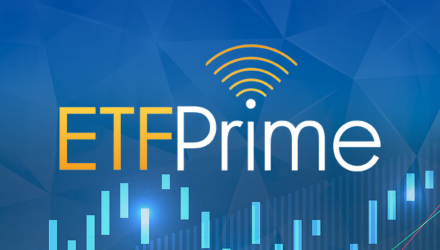On this week’s episode of ETF Prime, host Nate Geraci is joined by ETF Trends’ CIO and director of research, Dave Nadig, who discusses the current status of bitcoin ETFs. Also, the Investment Company Institute (ICI)’s Keith Lawson speaks with Geraci and Nadig about Senator Ron Wyden’s misguided ETF tax change proposal. Finally, Stance Capital’s founder and managing partner Bill Davis spotlights the Stance Equity ESG Large Cap Core ETF (STNC).
Before diving into the heavier topic of ETF taxation, Geraci opens the show with a discussion of bitcoin futures ETFs with Nadig, who shares his thoughts about how the products have fared since launch. As far as Nadig is concerned, it’s been a bit anti-climatic, and trading in BITO has gone as expected.
The fund is now serving as a bridge trading tool, explains Nadig: “What you get in the futures is a lot of liquidity, a lot of bridging capability for people who were hedging risk across multiple markets. That’s great. There’s a natural cap on how much activity like that there is.”
Changing the Way ETFs Are Taxed
Next up is Keith Lawson, deputy general counsel of tax law for the Investment Company Institute, the leading association representing regulated funds globally.
Lawson joins Geraci and Nadig to talk about how ICI has been highly outspoken against the proposed ETF tax changes put forth by Senator Wyden. The proposal would eliminate the “tax magic” of ETFs, the in-kind redemption of ETF shares without having to recognize taxable gains.
Nadig is curious if “heartbeat trading” plays a role in why this whole situation has become a focus for lawmakers. As he notes, on the one hand, it seems sensible and fair to not want to be impacted by the investments of others. On the other hand, some of the enormous trades taking place exist solely for the purposes of washing out capital gains from a portfolio — which may have drawn scrutiny from lawmakers.
With that said, the proposed change isn’t currently in the bill working through Congress at this moment. However, the proposal could easily reappear at any time. Much of its relevance comes down to what’s going on with spending provisions, says Lawson, and how to increase revenue, which is always a topic of conversation.
Looking at who this proposal would ultimately impact if it were to pass, Lawson argues that it would mostly affect everyday investors, as opposed to the super-wealthy. There are nearly 12 million ETF-owning households in the U.S., 92% of which have income below $400,000, with the median income sitting below $125,000.
Thinking of this possible taxation, Nadig notes how the tax code has generally been used to encourage long-term investing, ultimately working as a noble good. The proposed elimination of in-kind redemptions runs counter to that spirit. This whole issue concerning ETF taxation, if anything, is going against all of this. “It’s not like we’re creating a new tax code to get rid of the carried interest loophole,” says Nadig.
As far as what may happen, moving forward, Lawson feels it depends in part on what the revenue score is. It’s hard to tell how much money would be raised. If it’s a significant amount, then that may make the proposal all the more interesting to congresspeople looking for ways to pay for other projects. At the same time, it shows how it may harm modern income investors over the long term.
Show Your Stance
Lastly, Bill Davis, founder of Stance Capital, checks in with Geraci about Stance’s particular quantitative approach to ESG investing. In March, the firm launched STNC, which converted some SMA assets into this ETF. The fund is also notable for using a semi-transparent structure: the Blue Tractor-Shielded Alpha Structure.
As far as why it was wise to go this route, Davis explains that Stance is very active and that for taxable clients, it made a lot more sense to consider a structure other than SMA because of the inherent tax advantages within the ETF space.
Another reason comes down to how the underlying strategy of STNC is semi-concentrated, typically holding around 50 positions. As a result, there’s a composite minimum of $150,000 to invest in the SMA, which shows how an ETF can democratize access to the fund for smaller investors who may have less to contribute.
Davis adds how, “Ultimately, getting to a ticker symbol was important to us, and the ETF just made so much more sense from a tax standpoint than a mutual fund.”
Davis also has lots of thoughts on ESG investing. In regards to STNC, Davis states, “In our case, the ESG component is rules-based. We basically have developed 24 material risk factors, our key performance indicators, that could apply to any company but are essentially applied to an industry group.” He goes on to discuss impact weighting and how ESG can play into portfolio construction and risk analysis.
Listen to the Entire ETF Prime Episode Featuring Dave Nadig:
For more ETF Prime podcast episodes, visit our ETF Prime channel.

